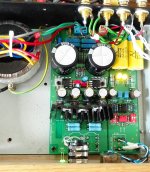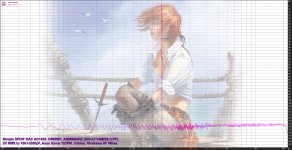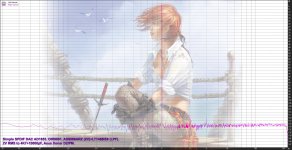And original stock heatsinks are not heatsink, it's like a scary joke.😡
Thank you, that's how I feel exactly and why I tried other solutions with what I had at home.
With my first bcl clone, I could feel heat radiating with my hand over the board (somewhere around 10cm above or so). With this build, not nearly as much.
Attachments
I would like use other board for this amp... some like this.
An externally hosted image should be here but it was not working when we last tested it.
This is nice board with space for heat sink. I found this photo in Head-fi thread.
Here, you can increase BIAS without issue of hot
Here, you can increase BIAS without issue of hot
Hi,
I did some tests on my BCL right now regarding BIAS and THD
I soldered just a 10R resistor parallel to each 10R emitter resistor (only for one channel), so I got 5R emitter resistance. Like expected BIAS increased from 40mA to 80mA.
First I must admit that my soundcard is not the best for THD measurements, output directly connected to input gives in the best case 0,004%.
The measurements were done with 1kHz 450mV rms to a load of 22ohm.
BIAS 40mA : THD=0,012%
BIAS 80mA : THD=0,004%, that means somewhere below THD of the soundcard
I think this nice improvement is not that big surprise but the question is, will it be audible?
To perform a listening test I have to modify also the second channel (it´s quick done), but at the moment I´m occupied with my family.
Temperature of transistors with 40mA is about 45°C, with 80mA about 70°C (original heatsinks), so it was not a problem during the short period (10 mins. or so) of measurements.
I did some tests on my BCL right now regarding BIAS and THD
I soldered just a 10R resistor parallel to each 10R emitter resistor (only for one channel), so I got 5R emitter resistance. Like expected BIAS increased from 40mA to 80mA.
First I must admit that my soundcard is not the best for THD measurements, output directly connected to input gives in the best case 0,004%.
The measurements were done with 1kHz 450mV rms to a load of 22ohm.
BIAS 40mA : THD=0,012%
BIAS 80mA : THD=0,004%, that means somewhere below THD of the soundcard
I think this nice improvement is not that big surprise but the question is, will it be audible?
To perform a listening test I have to modify also the second channel (it´s quick done), but at the moment I´m occupied with my family.
Temperature of transistors with 40mA is about 45°C, with 80mA about 70°C (original heatsinks), so it was not a problem during the short period (10 mins. or so) of measurements.
Last edited:
Thanks Andreas.
It's very interesting and I await your comments about sound but 70º is a big hándicap. When we close the enclosure, as this could raise the temperature? What about the other components? like caps, resistors ...
ummm is a complicated question.
It's very interesting and I await your comments about sound but 70º is a big hándicap. When we close the enclosure, as this could raise the temperature? What about the other components? like caps, resistors ...
ummm is a complicated question.
Today I changed the two AD744 for the OPA2134 and I can be wrong, but I think it has been reduced the gain. Is it possible?
Today I changed the two AD744 for the OPA2134 and I can be wrong, but I think it has been reduced the gain. Is it possible?
OPA2132/34 very crappy OpAMP, you'll better to try AD825AR, but with stock correction it will generate.
Hi,
I did some tests on my BCL right now regarding BIAS and THD
I soldered just a 10R resistor parallel to each 10R emitter resistor (only for one channel), so I got 5R emitter resistance. Like expected BIAS increased from 40mA to 80mA.
First I must admit that my soundcard is not the best for THD measurements, output directly connected to input gives in the best case 0,004%.
The measurements were done with 1kHz 450mV rms to a load of 22ohm.
BIAS 40mA : THD=0,012%
BIAS 80mA : THD=0,004%, that means somewhere below THD of the soundcard
I think this nice improvement is not that big surprise but the question is, will it be audible?
To perform a listening test I have to modify also the second channel (it´s quick done), but at the moment I´m occupied with my family.
Temperature of transistors with 40mA is about 45°C, with 80mA about 70°C (original heatsinks), so it was not a problem during the short period (10 mins. or so) of measurements.
+70C - limit. 🙁
OPA2132/34 very crappy OpAMP, you'll better to try AD825AR, but with stock correction it will generate.
Thanks Damon. Now I haven´t AD825AD, but I have an AD823ANZ on my warehouse 😀😀
I can try this tomorrow.😎 😎
Thanks Damon. Now I haven´t AD825AD, but I have an AD823ANZ on my warehouse 😀😀
I can try this tomorrow.😎 😎
AD823 - crap too, as opa2132/34. It's a medical fact.😀😀😀

AD823 - crap too, as opa2132/34. It's a medical fact.😀😀😀
😀😀😀 ok, you win, I am preparing a purchase on Mouser... a pair add to cart. I will need a pcd from smd to though hole

😀😀😀 ok, you win, I am preparing a purchase on Mouser... a pair add to cart. I will need a pcd from smd to though hole
AD8066/65 very good OpAMPs (especially for I/V converters, I using it in my simple DAC AD1853).🙂
A little offtopic.🙂😀😀😀 ok, you win, I am preparing a purchase on Mouser... a pair add to cart. I will need a pcd from smd to though hole
Attachments
Second channel is ready.
Before listening test I wanted to check the temperatures. With closed box the temp. increased to 80°C ! (after 15 mins). Ambient temp. in my small workshop in the cellar is relatively cold 20°C, with let´s say 30°C ambient temp. we will go to 90°C or more. I see no way to do this mod. without enlarging the heatsinks.
But it should not be a problem for my listening test, with opened enclosure and powering off from time to time to cool down the amp.
Report will follow soon.
Before listening test I wanted to check the temperatures. With closed box the temp. increased to 80°C ! (after 15 mins). Ambient temp. in my small workshop in the cellar is relatively cold 20°C, with let´s say 30°C ambient temp. we will go to 90°C or more. I see no way to do this mod. without enlarging the heatsinks.
But it should not be a problem for my listening test, with opened enclosure and powering off from time to time to cool down the amp.
Report will follow soon.
Yes, probably!
Where do you live in spain, Andalucia? You changed the flag, is this a political statement?
I know, very off topic and I´m not disappointed if you don´t want to answer.
Where do you live in spain, Andalucia? You changed the flag, is this a political statement?
I know, very off topic and I´m not disappointed if you don´t want to answer.
far south... Canarias
No, I was looking the EU flag from the beginning and I didn't know how change it. I am a European citizen
No, I was looking the EU flag from the beginning and I didn't know how change it. I am a European citizen
Second channel is ready.
Before listening test I wanted to check the temperatures. With closed box the temp. increased to 80°C ! (after 15 mins). Ambient temp. in my small workshop in the cellar is relatively cold 20°C, with let´s say 30°C ambient temp. we will go to 90°C or more. I see no way to do this mod. without enlarging the heatsinks.
But it should not be a problem for my listening test, with opened enclosure and powering off from time to time to cool down the amp.
Report will follow soon.
terrible smoke machine. 🙁
My LBCL now +50C, working 15 hours, in room +22C. BIAS=176 mA and not float.
I'm not sure, but for class A heatsink must be approx 40-60 sq.cm per 1W.
Last edited:
terrible smoke machine. 🙁
My LBCL now +50C, working 15 hours, in room +22C. BIAS=176 mA and not float.
Damon, please How is your pcb?
- Home
- Amplifiers
- Headphone Systems
- [Headamp] upgrading a Lehmann BCL clone


